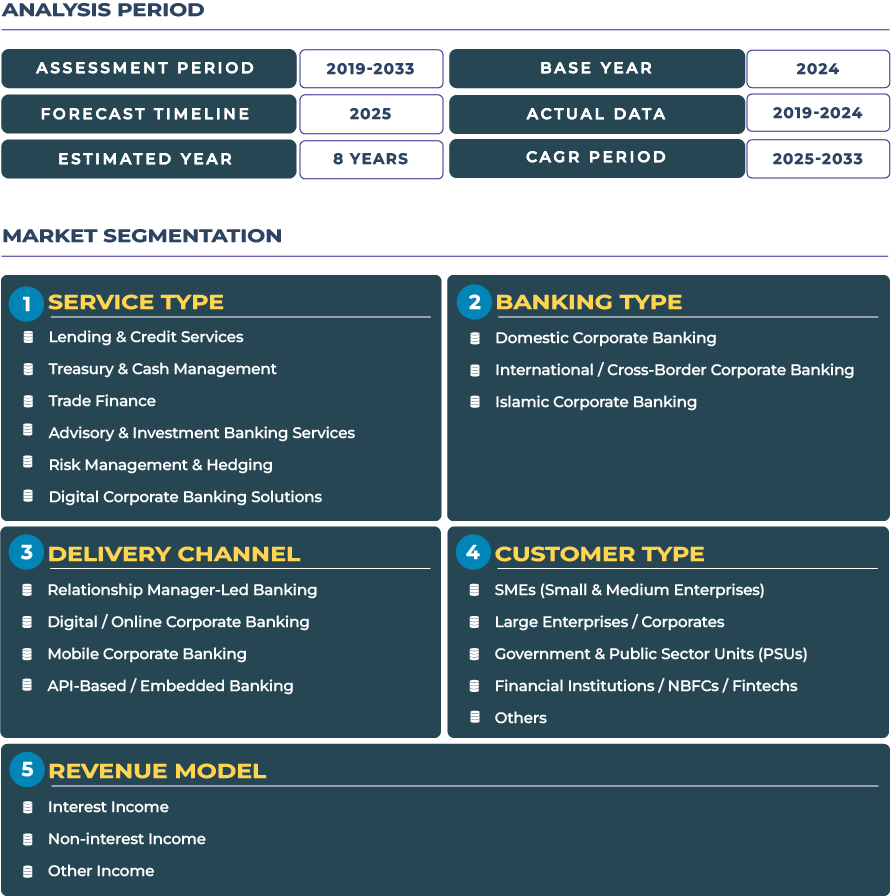Corporate Banking Digital Transformation in Zimbabwe: Modernizing SME and Enterprise Services
Zimbabwe corporate banking market is undergoing cautious but meaningful digital transformation as banks modernize platforms to serve corporates and SMEs more efficiently. The transition is driven by a combination of pressing liquidity needs among commodity exporters, the emergence of mobile and alternative payment rails, and growing demand for offshore treasury access. Zimbabwe’s banking sector is adapting to a complex macroeconomic environment by offering targeted receivables funding, pre-export financing and integrated payment solutions that reduce operational friction for agribusiness, mining suppliers, and manufacturing firms. While structural constraints persist, local institutions are leveraging digital channels and partnerships to improve credit accessibility, automate trade documentation and provide treasury services suited to volatile FX regimes. This evolution positions corporate banks to play a more active role in facilitating trade, stabilizing working capital cycles, and supporting enterprise resilience across the economy.
Note:* The market size refers to the total revenue generated by banks through interest income, non-interest income, and other ancillary sources.
Zimbabwe Corporate Banking Market Outlook: Modernizing Corporate Finance under Macroeconomic Constraints
The Zimbabwe corporate banking market is projected to reach USD 0.4 billion in 2025 and expand to USD 0.5 billion by 2033, representing a compounded annual growth rate of approximately 2.3% (2025–2033). This measured growth reflects a balance between strong demand for trade and pre-export finance from agriculture and mining sectors and ongoing macroeconomic headwinds that constrain rapid expansion. Corporates with export revenues require tailored instruments, pre-export financing, invoice discounting, and offshore settlement accounts, to manage FX exposure and fund seasonal working capital. Domestic banks are responding by introducing digital-led offerings for receivables discounting, mobile payables and payroll automation, and advisory services for FX management. Regulatory efforts by the Reserve Bank of Zimbabwe to clarify foreign exchange operations and encourage robust payment rails are critical to supporting market stability. At the same time, banks are cautiously widening product suites, combining onshore lending with offshore treasury capabilities to give corporates better liquidity options while managing risk exposure in an opaque currency environment. The result is a pragmatic expansion trajectory anchored in trade finance and pragmatic digital upgrades rather than broad-based credit market growth.
Drivers & Restraints: Trade Finance Demand versus Systemic Headwinds
Drivers: A primary driver for corporate banking in Zimbabwe is persistent demand from agriculture and commodity corporates for structured trade and pre-export financing. Firms in tobacco, horticulture, minerals and related supply chains require short-term liquidity to bridge production cycles, finance inputs and fulfill export contracts. The diaspora and offshore remittance corridors increase the need for reliable offshore treasury arrangements. Additionally, the widespread use of mobile money and alternative payment rails has encouraged banks to develop digital corporate payables and receivables solutions that align with local payment behaviors. Banks are also forming partnerships with fintech providers to digitize invoicing, automate reconciliation, and offer faster receivables discounting for suppliers with export contracts.
Restraints: Despite these drivers, the corporate banking market faces substantial limitations. Hyperinflationary pressures and currency instability reduce the predictability of loan performance and complicate lending in both local and foreign currencies. Access to international correspondent banking relationships remains constrained for many institutions, limiting efficient USD-denominated settlement and cross-border liquidity. Political and economic risk factors in some periods raise credit risk premiums and limit appetite for longer-tenor corporate credit. In addition, limited digital infrastructure and uneven adoption among SMEs hamper scale deployment of digital corporate banking solutions. These combined factors moderate credit expansion and encourage banks to prioritize short-tenor, collateral-backed, or export-linked financing over broad unsecured corporate lending.
Trends & Opportunities: Pre-export Finance, Offshore Treasury, and Mobile Corporate Payments
A notable trend is the growth of pre-export financing and receivables discounting tailored to commodity cycles. Banks offer short-term facilities against confirmed export contracts, enabling producers and traders to meet seasonal working capital needs while providing lenders with collateralized exposure to confirmed foreign revenue streams. Offshore treasury solutions, bank accounts and settlement arrangements outside Zimbabwe, are increasingly used by exporters and multinational subsidiaries to manage FX receipts and hedge currency risk. Mobile-based corporate payables and payroll systems are also expanding, aligning with widespread mobile money usage and creating efficient B2B disbursement channels for firms operating across dispersed geographies. These trends present opportunities: banks that can structure compliant pre-export credit, integrate mobile payables into corporate workflows, and provide secure offshore liquidity corridors will capture disproportionate market share.
Further opportunities include productizing receivables discounting into scalable digital offerings, partnering with commodity traders to underwrite export flows, and building advisory services for FX risk management and trade documentation. Banks can also develop subscription-based treasury dashboards and API-led integrations to streamline reconciliation for exporters and suppliers. Those moves would position lenders as strategic partners rather than simply credit providers.
Competitive Landscape: Local Leadership, Product Innovation, and Strategic Positioning
Zimbabwe corporate banking sector is anchored by a mix of local leaders and regional affiliates. CBZ Holdings remains a prominent domestic group offering diversified banking and digital services with an emphasis on corporate and retail channels. Other institutions and merchant banks are seeking niche mandates, trade desks, pre-export finance desks, and offshore treasury services, to serve export-oriented corporates. Competitive strategies focus on three pillars: (1) structuring pre-export and commodity-linked facilities to address FX-backed revenue streams; (2) delivering offshore treasury and multi-currency account solutions to facilitate international settlement and reduce currency conversion friction; and (3) integrating mobile-based corporate payables and payroll products to improve receivables throughput and supplier liquidity. Banks with stronger correspondent networks and compliance capabilities can extend more efficient cross-border solutions, while domestic groups with strong branch networks can combine onshore lending with digital trade finance to capture SME supply chains.







